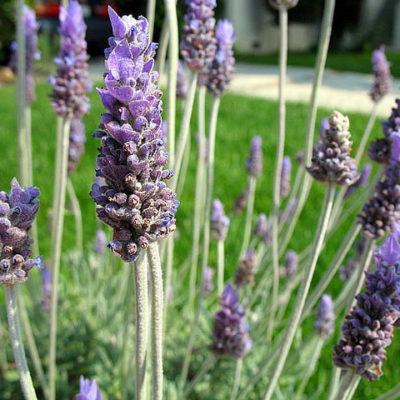Plant Focus: Photinia x fraseri ‘Red Robin’ – A Garden Designer’s View

As a garden designer, I have very mixed emotions when it comes to Photinia x fraseri ‘Red Robin’.
Am I being too controversial if I say that this plant is now being so over-used that it is becoming simply boring?
Let’s start with the positive…
There is no doubt that Red Robin is an attractive and very useful plant, tolerant of most conditions. Its evergreen dark green mature leaves, and bright red young leaves are very well known to the general public, and it also has white flowers and red berries. If the plant is trimmed over when the new leaves turn green, it quickly forms a new set of bright red leaves, giving the plant a fairly constant showy appearance.
It is grown in a number of forms – from large and specimen shrubs, to tall espaliers, to hedges, and to half and full standards – the latter having tree like qualities.
It is also a very cost effective plant – being one of the least expensive plants to buy in a specimen size.
Victim of it’s own success…
With all these positive qualities, it has become the “go to” plant for many landscape and garden designers needing a tall screening shrub. And perhaps because of this, it seems to be everywhere.
I wonder how many gardens these days actually don’t have one, in one form or another!!!
And yet, as a garden designer, I often find myself desperately trying to think of plants to use other than good old Red Robin, when actually, Red Robin is the best plant for a particular slot in a garden.
So, perhaps the real issue for me is that the plant is being used in such unsubtle ways. As plants people, we need to be thinking more about how to use Red Robin better with other plants, and what plants associate well with it.
When I talk to clients about plants, even those with little plant knowledge know and like “Red Robin”. But recently, I have a few clients saying that they “didn’t much care” for the plant or that Red Robin hedges seemed to be “just about everywhere”.
But rather than throwing the baby out with the bath water, and no longer using this most valuable of plants at all, perhaps it is time we as designers and gardeners started planting it with a little more thought.
Red Robin… with class
Let’s think about a few examples. When used as a screening plant or tall shrub at the back of a border, it can be combined with other large evergreens with different foliage colours such as Pittosporum, Choisya, Rhamnus, Euonymus japonicus – yellow variegated leaves are a wonderful contrast to the new red Photinia leaves, and Choisyas have a more vibrant and lighter green colour.
Large deciduous shrubs (e.g. Cotinus, Viburnums etc) can also provide excellent contrast in both leaf colour and texture.
Lower level shrubs in mid border can continue this theme and add flower colour e.g. Teucrium, Weigela, Fuchsia, Brachyglottis, Roses etc – to be further enhanced by a frontal edging of perennials and smaller shrubs e.g. lavender etc.
As an example, in my own garden, I have used Red Robin accompanied by some silver variegated shrubs as the backdrop to a border full of vibrant autumn colour (Rudbeckias, Sedums, Asters etc). Used in this way, Photinia Red Robin becomes a key anchor plant in a beautiful border, an important part of the picture, but not the picture.
Even when Red Robin is used as a single specimen plant, it can still be made more interesting – for example by surrounding it with a contrasting underplanting such as Euonymus Silver Queen planted en masse.
Enough said….
Photo credits: juliacasado1, miluz, dead cat, Lenora (Ellie) Enking, Myrabella, Wikimedia, Leonora (Ellie) Enking, Scott Zona, Megan Hansen, Karen.









